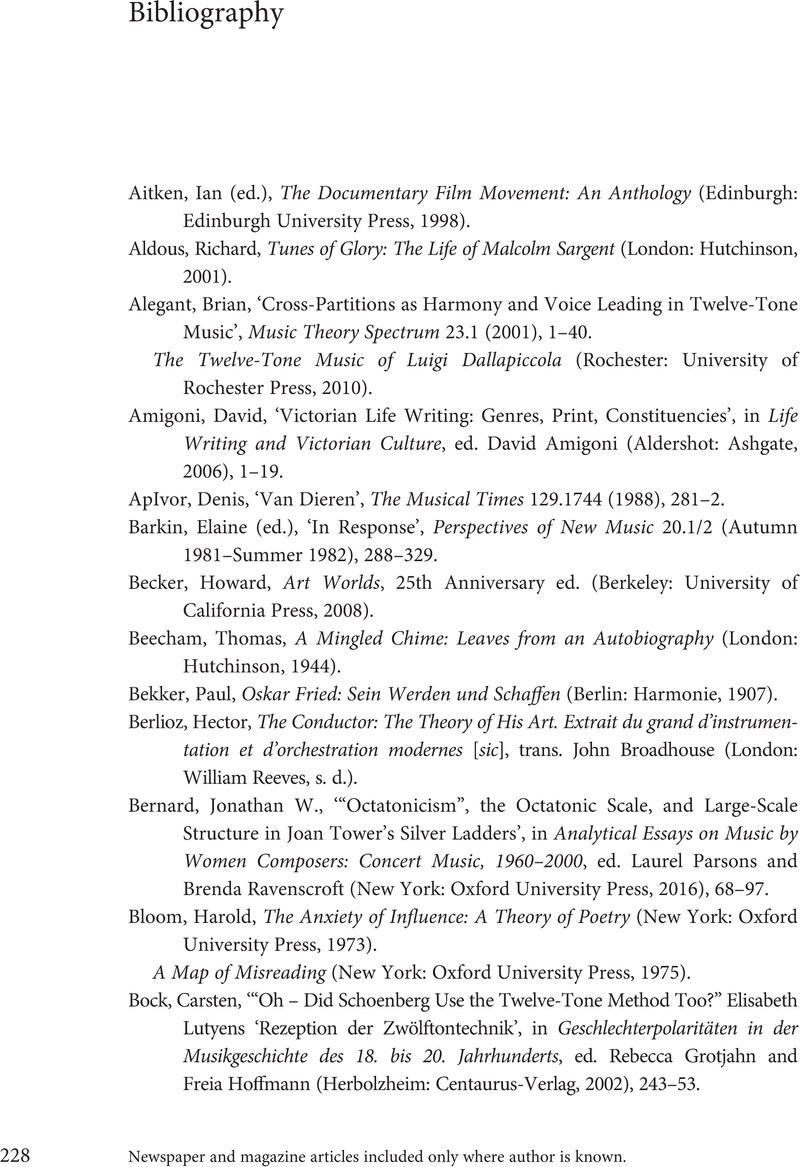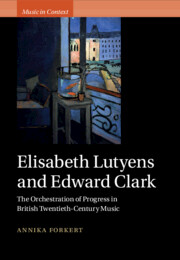Book contents
- Elisabeth Lutyens and Edward Clark
- Music in Context
- Elisabeth Lutyens and Edward Clark
- Copyright page
- Dedication
- Contents
- Figures
- Tables
- Musical Examples
- Preface
- Acknowledgements
- Introduction
- 1 Conducting Personae
- 2 Composing Influence
- 3 Crafting Music
- 4 Collaborating to Control
- 5 Completing the Lives
- Afterword
- Bibliography
- Main Archives
- Index
- References
Bibliography
Published online by Cambridge University Press: 05 October 2023
- Elisabeth Lutyens and Edward Clark
- Music in Context
- Elisabeth Lutyens and Edward Clark
- Copyright page
- Dedication
- Contents
- Figures
- Tables
- Musical Examples
- Preface
- Acknowledgements
- Introduction
- 1 Conducting Personae
- 2 Composing Influence
- 3 Crafting Music
- 4 Collaborating to Control
- 5 Completing the Lives
- Afterword
- Bibliography
- Main Archives
- Index
- References
Summary

- Type
- Chapter
- Information
- Elisabeth Lutyens and Edward ClarkThe Orchestration of Progress in British Twentieth-Century Music, pp. 228 - 236Publisher: Cambridge University PressPrint publication year: 2023



